This article was co-authored by Jarod Carter, DPT, CMT and by wikiHow staff writer, Jessica Gibson. Jarod Carter is a Physical Therapist, Consultant, and the Owner of Carter Physiotherapy, a manual physical therapy clinic in Austin, Texas focused on manual therapy as well as telehealth services to resolve pain and injuries. Dr. Carter has over 15 years of professional physical therapy experience. He received a DPT (Doctor of Physical Therapy) and an MTC (Manual Therapy Certification) from the University of St. Augustine for Health Sciences. Dr. Carter also holds a BS in Kinesiology from the University of Texas at Austin.
There are 12 references cited in this article, which can be found at the bottom of the page.
wikiHow marks an article as reader-approved once it receives enough positive feedback. In this case, 100% of readers who voted found the article helpful, earning it our reader-approved status.
This article has been viewed 425,051 times.
Upper back pain (in the thoracic region of the spine, below the neck, and along the length of the ribs) is often the result of poor sitting or standing posture or is due to minor trauma from playing sports or exercising. The pain is often characterized as achy and sore to the touch, which typically indicates a muscle strain. Muscle strains often respond well to rest or other home treatments and resolve within a few days.
Here are 14 effective ways to treat upper back pain.
Steps
Stretching and Foam Rolling Routines for Upper Back Pain
Expert Q&A
-
QuestionHow can I prevent upper back pain when I'm training?
 Scott Anderson, MA, ATC, SFMA, DNSPScott Anderson is the Chief Clinical Officer at SyncThink, an award winning startup founded out of Stanford University. Scott previously served as the Director of Sports Medicine/Athletic Training for Stanford University for over ten years from 2007 to 2017. Scott has over 18 years of clinical and management experience, and is a recognized international speaker on topics of clinical specialization, which include developmental kinesiology, neuroscience/concussion, and movement dysfunction. He is a certified Dynamic Neuromuscular Stabilization Practitioner (DNSP), Sports Safety Specialist and is certified to conduct Selective Functional Movement Assessments (SFMA), and Functional Movement Screenings (FMS). He earned a BS in Athletic Training from Washington State University in 2000 and an MA in Athletic Administration from Saint Mary's College in 2002.
Scott Anderson, MA, ATC, SFMA, DNSPScott Anderson is the Chief Clinical Officer at SyncThink, an award winning startup founded out of Stanford University. Scott previously served as the Director of Sports Medicine/Athletic Training for Stanford University for over ten years from 2007 to 2017. Scott has over 18 years of clinical and management experience, and is a recognized international speaker on topics of clinical specialization, which include developmental kinesiology, neuroscience/concussion, and movement dysfunction. He is a certified Dynamic Neuromuscular Stabilization Practitioner (DNSP), Sports Safety Specialist and is certified to conduct Selective Functional Movement Assessments (SFMA), and Functional Movement Screenings (FMS). He earned a BS in Athletic Training from Washington State University in 2000 and an MA in Athletic Administration from Saint Mary's College in 2002.
Sports Medicine & Injury Prevention Specialist When people have pain in that area, it's because they haven't developed the proper postural control to support their upright posture during the day. That typically is because we have a head full position or because our cervical spine is too far in front of our torso. So in many cases, this causes increased stress and muscle tension on the tissue in the upper thoracic spine, the upper mid-back, and can create chronic tension in those tissues, which are liable to be injured if you're exercising them or adding additional stress to them. I always tell people, you have to look at the cervical spine and work your way down and adjust the postural components so that the musculature at the mid-back level is not doing extra work during the day just to support your upright posture.
When people have pain in that area, it's because they haven't developed the proper postural control to support their upright posture during the day. That typically is because we have a head full position or because our cervical spine is too far in front of our torso. So in many cases, this causes increased stress and muscle tension on the tissue in the upper thoracic spine, the upper mid-back, and can create chronic tension in those tissues, which are liable to be injured if you're exercising them or adding additional stress to them. I always tell people, you have to look at the cervical spine and work your way down and adjust the postural components so that the musculature at the mid-back level is not doing extra work during the day just to support your upright posture. -
QuestionWhat causes pain in the upper back?
 Jarod Carter, DPT, CMTJarod Carter is a Physical Therapist, Consultant, and the Owner of Carter Physiotherapy, a manual physical therapy clinic in Austin, Texas focused on manual therapy as well as telehealth services to resolve pain and injuries. Dr. Carter has over 15 years of professional physical therapy experience. He received a DPT (Doctor of Physical Therapy) and an MTC (Manual Therapy Certification) from the University of St. Augustine for Health Sciences. Dr. Carter also holds a BS in Kinesiology from the University of Texas at Austin.
Jarod Carter, DPT, CMTJarod Carter is a Physical Therapist, Consultant, and the Owner of Carter Physiotherapy, a manual physical therapy clinic in Austin, Texas focused on manual therapy as well as telehealth services to resolve pain and injuries. Dr. Carter has over 15 years of professional physical therapy experience. He received a DPT (Doctor of Physical Therapy) and an MTC (Manual Therapy Certification) from the University of St. Augustine for Health Sciences. Dr. Carter also holds a BS in Kinesiology from the University of Texas at Austin.
Physical Therapist Upper back pain can have multiple causes. It could be from a traumatic incident, such as a car wreck or a fall. Upper back pain could also come from bad posture and repetitive motions throughout the day.
Upper back pain can have multiple causes. It could be from a traumatic incident, such as a car wreck or a fall. Upper back pain could also come from bad posture and repetitive motions throughout the day.
Warnings
- Get emergency medical care if you have back pain after a major injury like a car crash, bad fall, or sports injury. You should also get emergency care if you have back pain along with fever or bowel and bladder control problems.[15]⧼thumbs_response⧽
References
- ↑ https://www.mayoclinic.org/diseases-conditions/back-pain/diagnosis-treatment/drc-20369911
- ↑ https://health.clevelandclinic.org/topical-pain-relief-what-is-it-and-how-does-it-work/
- ↑ https://www.painscience.com/articles/epsom-salts.php
- ↑ https://health.clevelandclinic.org/should-you-use-ice-or-heat-for-pain-infographic/
- ↑ https://healthcenter.vt.edu/content/dam/healthcenter_vt_edu/assets/docs/MCOrthoRehab-UpperBack.pdf
- ↑ https://health.clevelandclinic.org/massage-rollers-and-more-how-to-ease-neck-and-back-pain-with-simple-tools/
- ↑ Jarod Carter, DPT, CMT. Physical Therapist. Expert Interview. 11 June 2020.
- ↑ Jarod Carter, DPT, CMT. Physical Therapist. Expert Interview. 11 June 2020.
- ↑ https://health.clevelandclinic.org/5-myths-about-massage-therapy/
- ↑ Jarod Carter, DPT, CMT. Physical Therapist. Expert Interview. 11 June 2020.
- ↑ http://www.mayoclinic.org/tests-procedures/acupuncture/basics/definition/prc-20020778
- ↑ https://healthcenter.vt.edu/content/dam/healthcenter_vt_edu/assets/docs/MCOrthoRehab-UpperBack.pdf
- ↑ https://journals.lww.com/ajpmr/Fulltext/2019/06000/Ultrasound_Guided_5_in_1_Injection__Trigger_Point.15.aspx
- ↑ https://www.mayoclinic.org/diseases-conditions/back-pain/in-depth/back-surgery/art-20048274
- ↑ https://www.mayoclinic.org/symptoms/back-pain/basics/when-to-see-doctor/sym-20050878
About This Article
To treat upper back pain, you can take over-the-counter anti-inflammatory medications like ibuprofen, naproxen, or aspirin for short-term pain relief. If your pain is from an injury that occurred in the last 48 hours, icing your upper back can help reduce swelling and combat pain. Light stretching and massage therapy are good options if you're dealing with a strained upper back muscle. If you want to try alternative therapies, consider seeing an acupuncturist or chiropractor. For tips on using a foam roller for pain relief, read on!

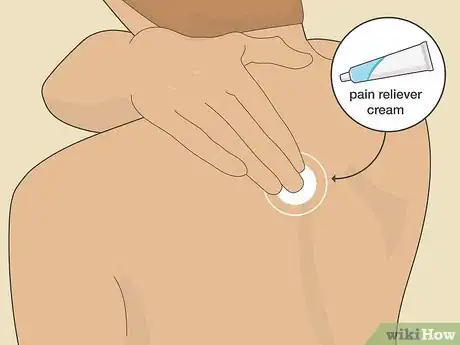
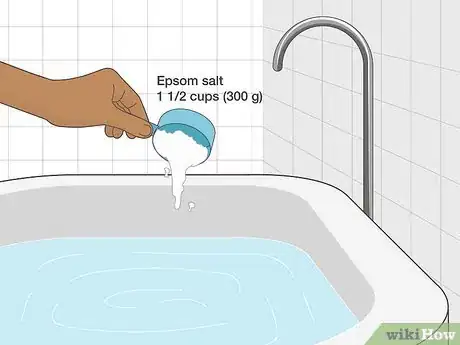
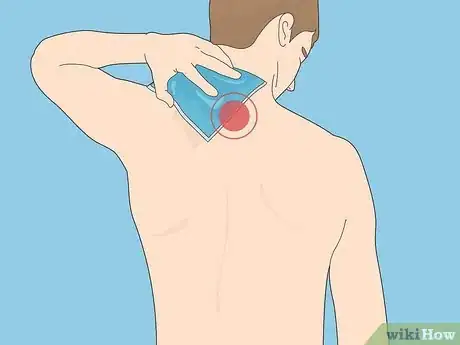
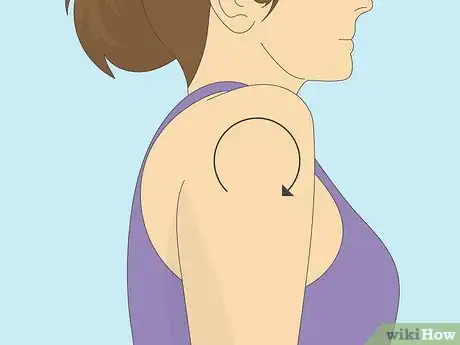
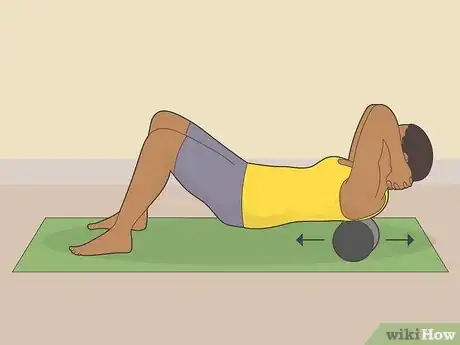
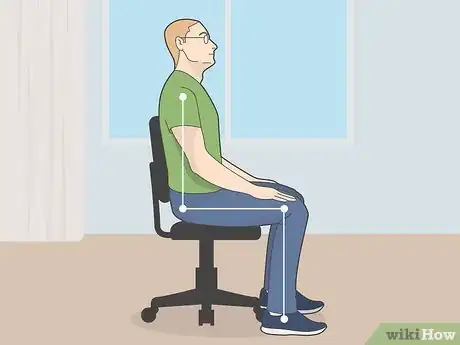



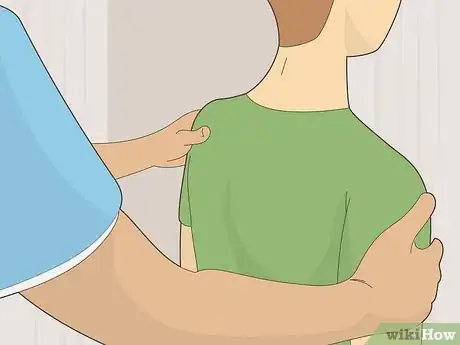
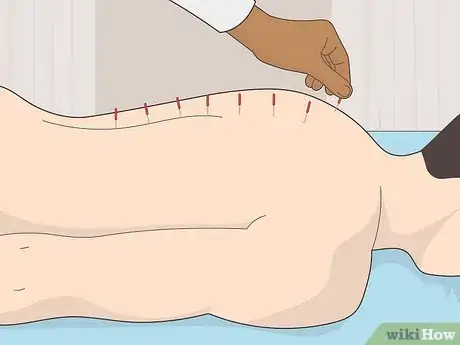
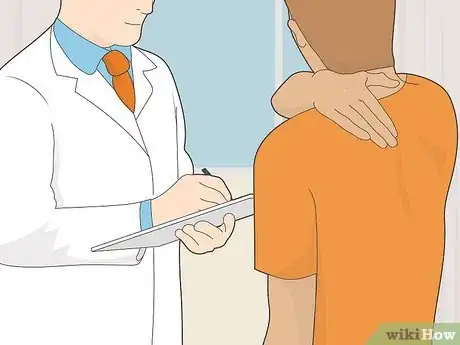
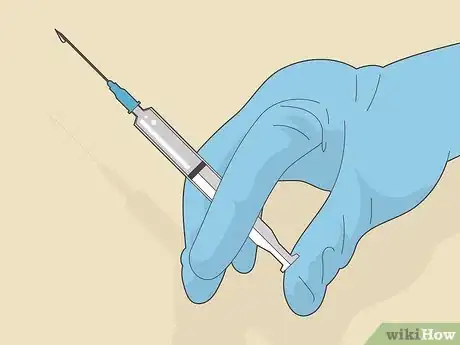
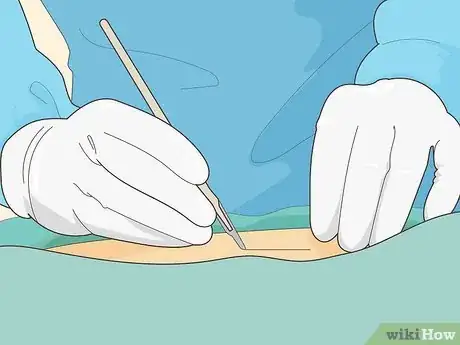
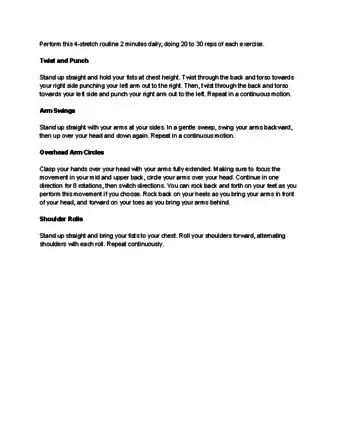
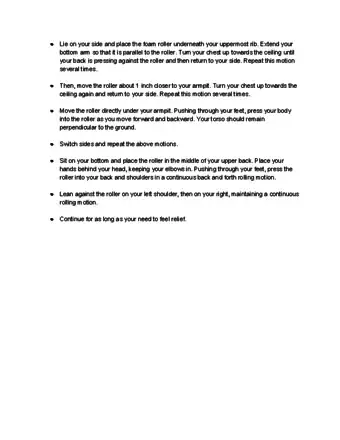
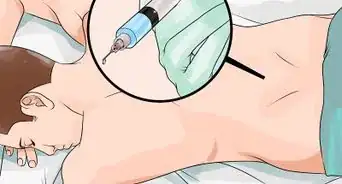
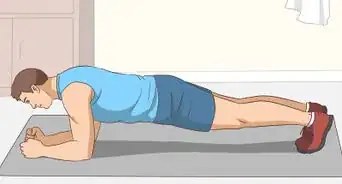

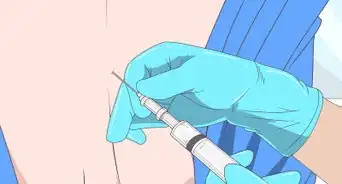
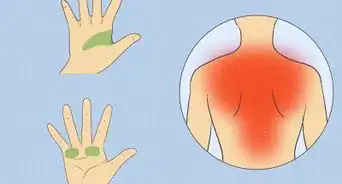
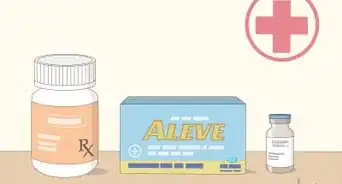
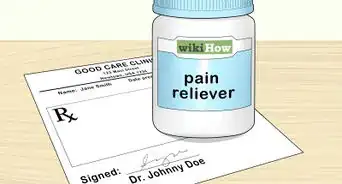
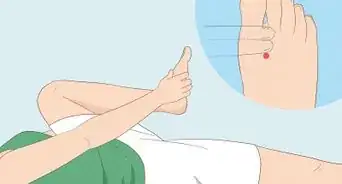

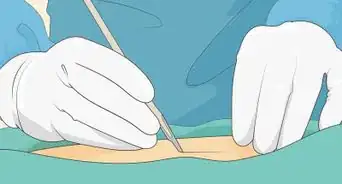
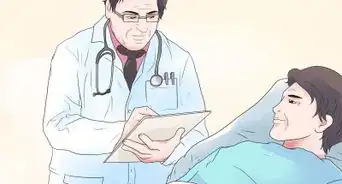
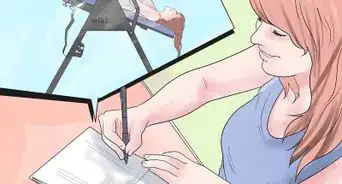
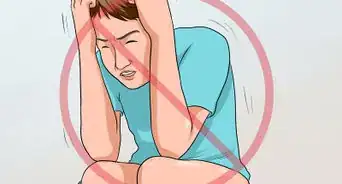










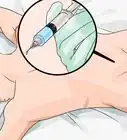
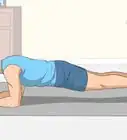
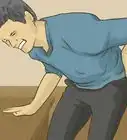
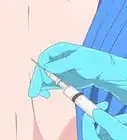



































Medical Disclaimer
The content of this article is not intended to be a substitute for professional medical advice, examination, diagnosis, or treatment. You should always contact your doctor or other qualified healthcare professional before starting, changing, or stopping any kind of health treatment.
Read More...